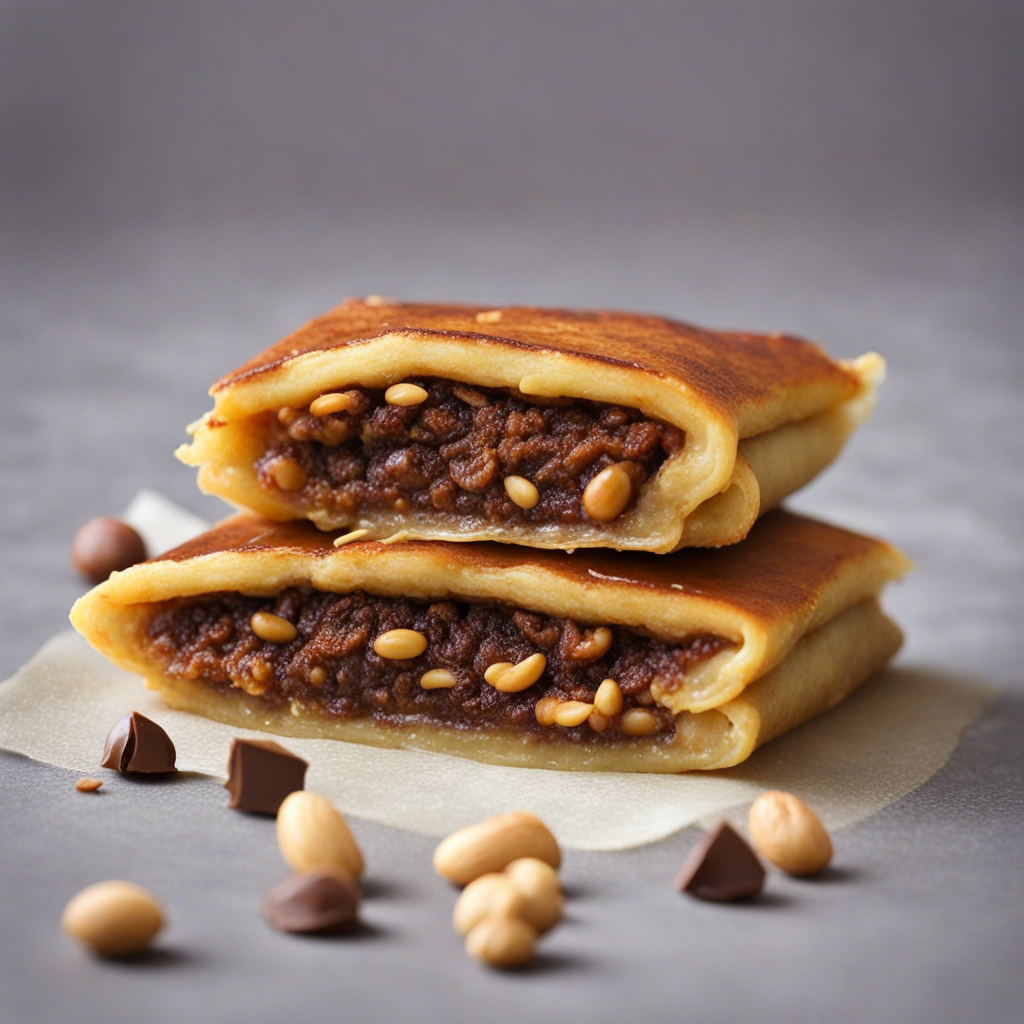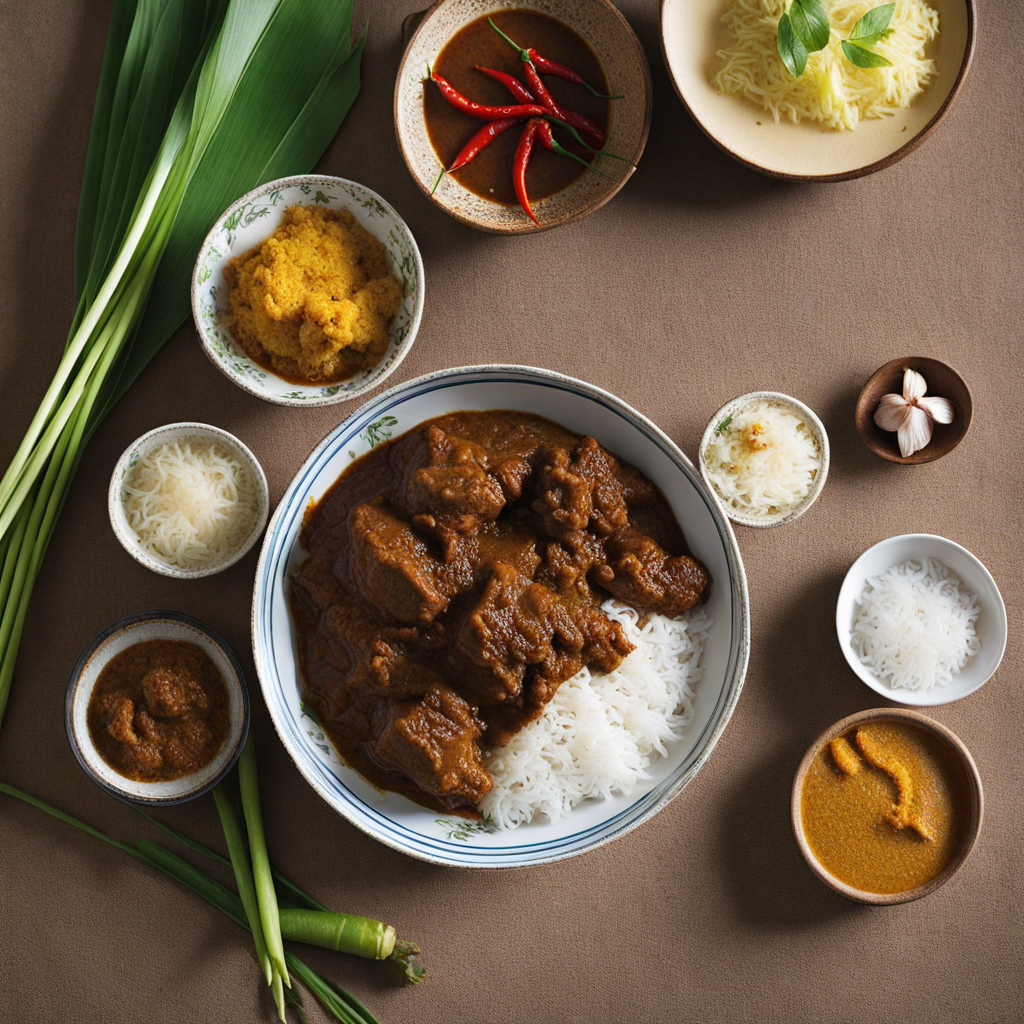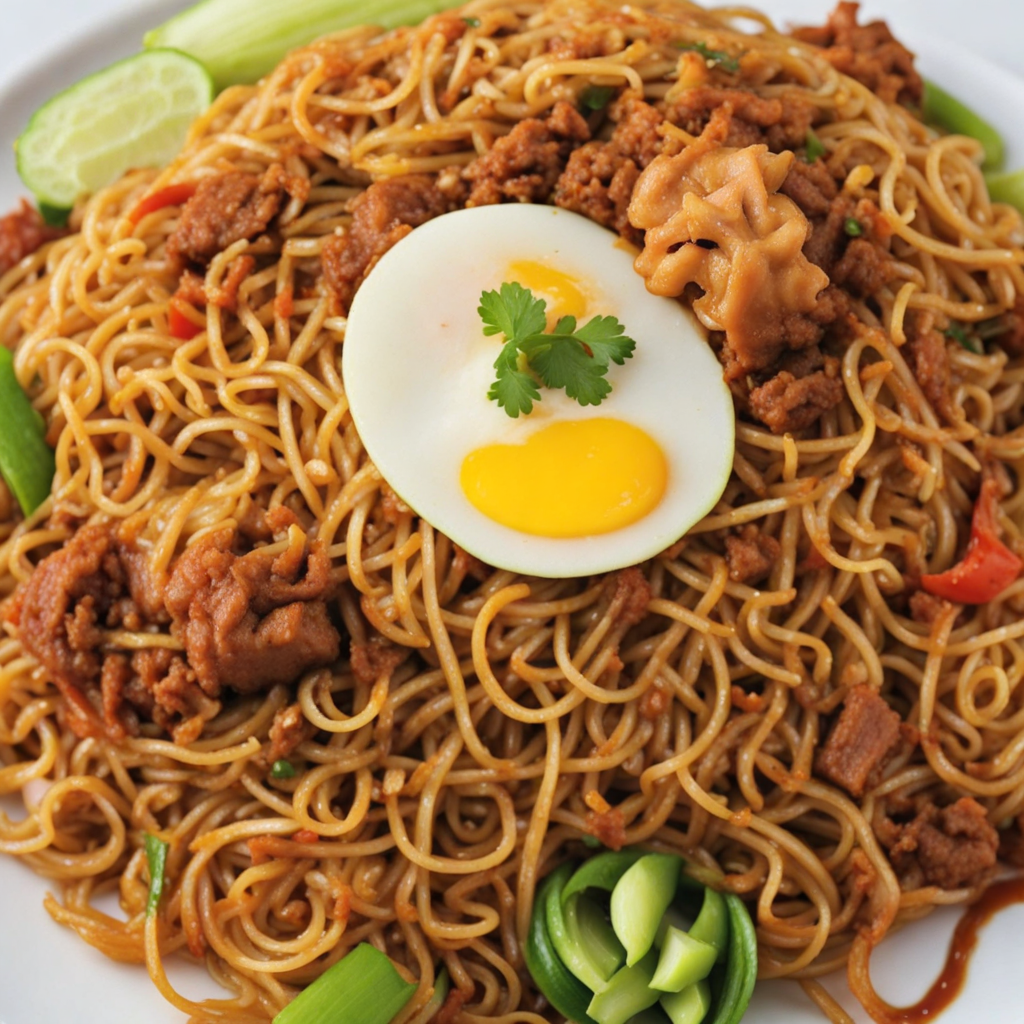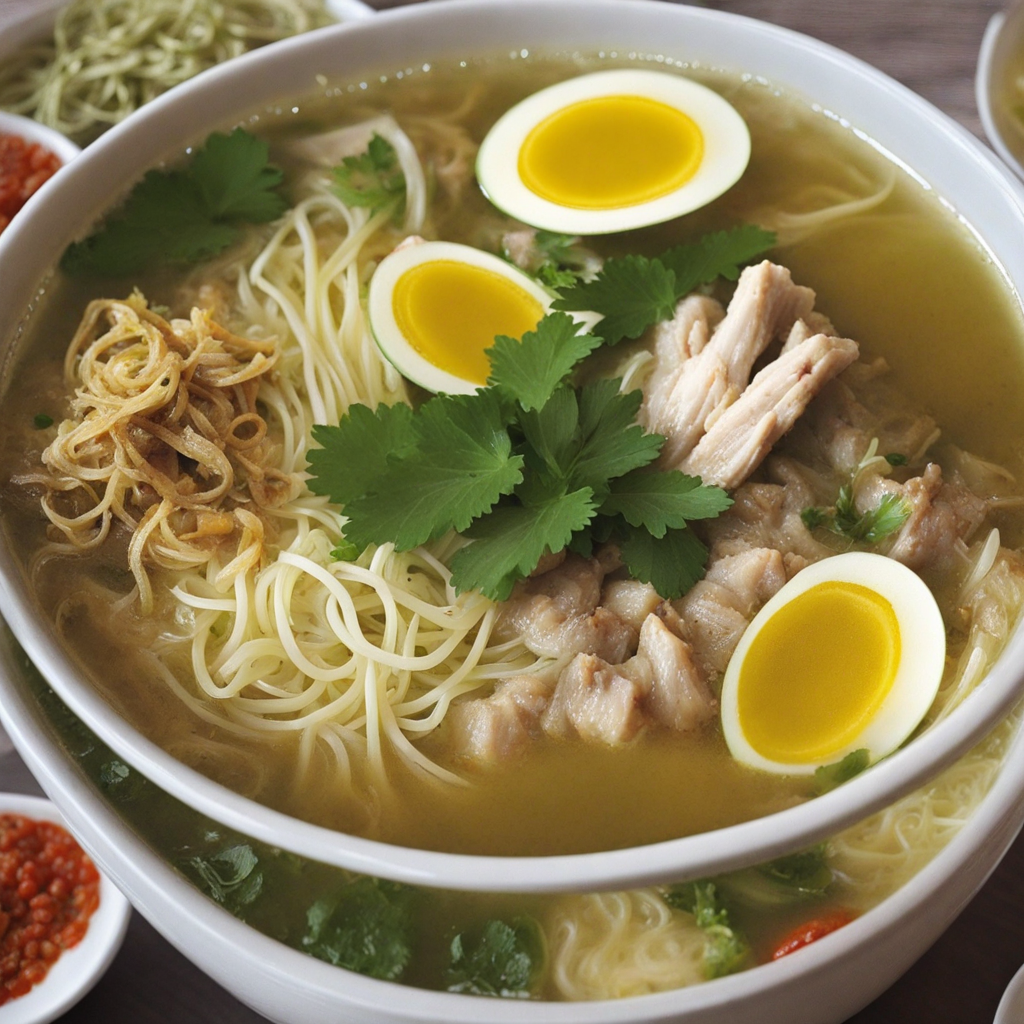Martabak Manis
Martabak Manis, often referred to as Indonesian sweet pancake, is a delightful street food treat that captivates the taste buds with its unique texture and flavor. At first glance, this thick, fluffy pancake is beautifully golden-brown, with a slightly crisp exterior that gives way to a soft, moist interior. Traditionally cooked on a griddle, the batter is made from a blend of flour, sugar, and yeast, allowing it to rise and develop a light spongy quality. Each bite is a harmonious mix of sweetness and richness, making it a perfect dessert or snack option for those looking to indulge in something unique. The true charm of Martabak Manis lies in its endless array of fillings and toppings. Classic choices include crushed peanuts, chocolate sprinkles, and grated cheese, all of which add a delightful contrast in texture and flavor. Some variations even incorporate condensed milk for an extra layer of sweetness. The combination of these ingredients creates a delectable explosion of flavors, with the nuttiness of the peanuts, the richness of the chocolate, and the creaminess of the cheese coming together to form a taste sensation that is both comforting and indulgent. Each vendor may have their own special twist, allowing for a personalized experience with every bite. Typically served in generous portions, Martabak Manis is not just a treat but an experience to be shared. Often enjoyed warm, it’s ideal for gatherings or as a late-night snack. The aroma wafting from freshly cooked Martabak Manis is irresistible, drawing in curious food lovers eager to try this beloved Indonesian delicacy. Whether enjoyed plain or loaded with an array of toppings, Martabak Manis is a sweet journey that invites you to explore the rich culinary landscape of Indonesia, leaving you wanting more with its diverse flavors and textures.
How It Became This Dish
Origin of Martabak Manis Martabak Manis, also known as "terang bulan" or "bulan," is a beloved street food originating from Indonesia, with roots tracing back to the Middle East. The dish is thought to have been introduced to Indonesia through the trade routes, where Arabic traders brought their culinary traditions. The name "martabak" itself is derived from the Arabic word "mutabbaq," which means "folded." Over time, this delicious treat has evolved to suit local tastes and ingredients, becoming an integral part of Indonesian street food culture. The traditional version of Martabak Manis consists of a thick, pancake-like base made from flour, sugar, and yeast, which is cooked on a griddle until it puffs up and develops a golden-brown crust. It is then filled with a variety of sweet ingredients, such as chocolate sprinkles, crushed peanuts, condensed milk, and sometimes even cheese. This delightful concoction is typically folded in half, creating a warm, gooey treat that is both satisfying and indulgent. \n\n Cultural Significance Martabak Manis holds a special place in Indonesian culture as a popular snack during social gatherings, celebrations, and even on regular evenings. It is often enjoyed as a late-night treat, with many vendors setting up their stalls in bustling night markets and street corners, serving fresh martabak to eager customers. The communal aspect of sharing food is emphasized through Martabak Manis, as it is often cut into smaller pieces for friends and family to enjoy together. In Indonesia, Martabak Manis is more than just food; it represents a sense of community and connection. Street food culture is deeply ingrained in the daily life of Indonesians, and Martabak Manis is a quintessential example of this tradition. Families often visit their local martabak stalls, fostering a sense of belonging and nostalgia associated with the sweet treat. It has become a symbol of urban life, bridging generational gaps as newer variations are introduced while still maintaining the classic flavors that many Indonesians grew up with. \n\n Evolution and Variations Over the years, Martabak Manis has undergone various transformations, adapting to the changing culinary landscape of Indonesia. While the classic version remains immensely popular, innovative street food vendors have introduced new flavors and fillings to entice a diverse array of palates. Modern variations include ingredients like Nutella, green tea, and even savory options that incorporate spices and herbs, showcasing the dish's versatility. In addition to the creative fillings, the cooking method has also evolved. Traditional vendors are now employing new techniques and equipment to enhance the cooking process, resulting in a more consistent texture and flavor profile. Some have even begun using electric griddles instead of charcoal, allowing for quicker cooking times and improved efficiency. Despite these changes, the essence of Martabak Manis remains intact, as it continues to be a favorite among locals and tourists alike. \n\n Regional Variations As Martabak Manis spread throughout Indonesia, various regions began to put their own unique spin on the dish, leading to regional variations. For instance, in Jakarta, the martabak is often thicker and sweeter, with an abundance of toppings that can include a mix of chocolate and cheese. In contrast, in Yogyakarta, the focus may lean more towards traditional flavors with less emphasis on extravagant fillings. In some regions, vendors have also introduced unique twists, such as using local fruits or incorporating regional spices into the batter. This adaptation allows for a broader representation of Indonesia's rich culinary diversity, celebrating local ingredients while paying homage to the dish's historical roots. Festivals and food fairs often showcase these regional variations, allowing people to explore the different interpretations of Martabak Manis. \n\n Modern Popularity and Global Reach With the rise of social media and food blogs, Martabak Manis has gained significant popularity beyond Indonesia's borders. Food enthusiasts from around the world have discovered this delicious treat, leading to a growing interest in Indonesian cuisine. The vibrant and eye-catching presentations of Martabak Manis have been widely shared on platforms like Instagram, further boosting its appeal among food lovers. As a result, Martabak Manis has begun to appear in various international food festivals and events, representing Indonesian street food culture on a global scale. Some restaurants outside of Indonesia have started to incorporate this sweet pancake into their menus, showcasing the dish's versatility and its ability to cater to different taste preferences. This global reach highlights the importance of food as a medium for cultural exchange, allowing people from different backgrounds to experience the flavors of Indonesia. \n\n Conclusion Martabak Manis is not just a delicious treat; it is a reflection of Indonesia's rich culinary heritage, cultural significance, and adaptability over time. From its origins as a simple street food item to its current status as a beloved dish enjoyed by many, Martabak Manis embodies the spirit of community and celebration in Indonesian culture. Its evolution and variations further illustrate the dynamic nature of food, as it continues to change while remaining a cherished part of Indonesia's food landscape. As it gains popularity on the global stage, Martabak Manis serves as a delicious ambassador of Indonesian cuisine, inviting everyone to indulge in its sweet, fluffy goodness.
You may like
Discover local flavors from Indonesia







